Photos: Incredible New Species Discovered in 2016
New species

Would you like to cross paths with a hairy tarantula from Colombia or a Thai newt that looks like a "Star Trek" Klingon?
If the answer is yes, you're in good company. The researchers who discovered these previously unknown species were ecstatic to find and describe them to the scientific world, even as they spent countless hours detailing the characteristics and quirks of each animal in studies published this year.
Here are 10 incredible species that researchers discovered in 2016, and cool science facts about each one.
Mysterious Tully monster

A fossil discovered in Illinois in 1958 was so bizarre that researchers dubbed it the Tully Monster, naming it after Francis Tully, the amateur collector who found it.
In the following decades, some experts wondered whether it was a worm, while others made the case that it was a shell-less snail. Now, after studying 1,200 Tully monster (Tullimonstrum gregarium) specimens, researchers have found that the so-called monster is actually a 307-million-year-old jawless fish.
The 1-foot-long (0.3 m) creature had large eyes and pointy teeth, indicating it was a fearsome predator in its day, the scientists said. [Read the full story on the Tully monster]
Horse-size T. rex cousin
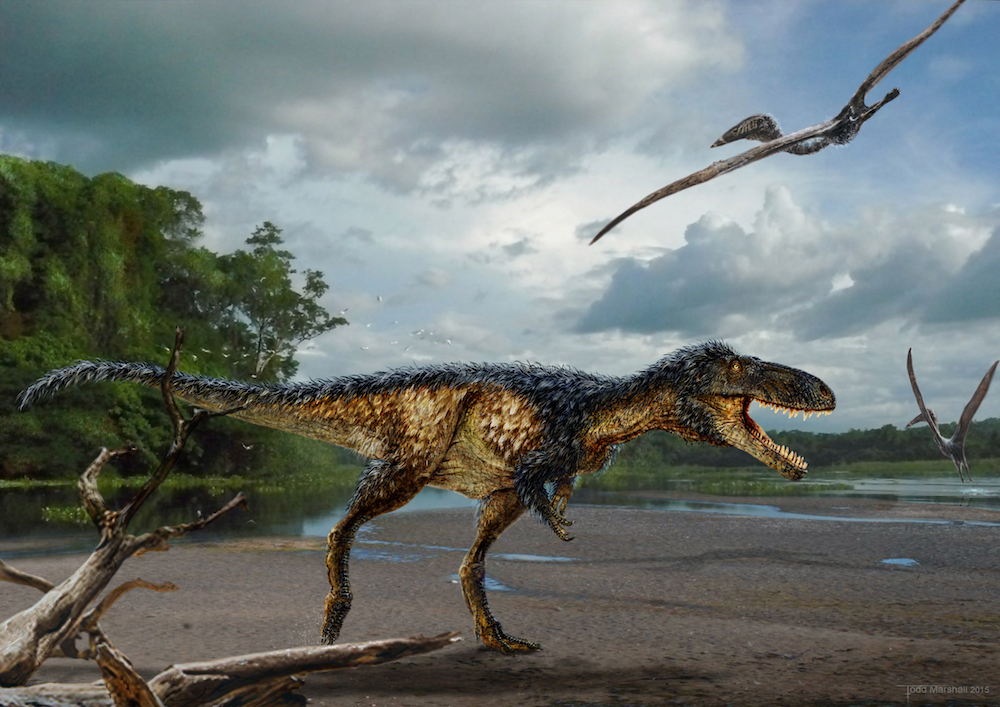
The horse-size cousin of Tyrannosaurus rex was not as big as the mighty dinosaur king, but it had a surprisingly advanced brain for its small stature, paleontologists announced this year.
Get the world’s most fascinating discoveries delivered straight to your inbox.
Researchers studied the 90-million-year-old dinosaur's braincase (the area where the brain sits in the skull), which they discovered in modern-day Uzbekistan. The tyrannosaur (Timurlengia euotica) had remarkable low-frequency hearing, which likely helped it hunt prey, they said.
This finding suggests that tyrannosaurs likely got smart before they got big, and that both their size and smarts likely helped them become apex predators. [Read the full story on the brainy tyrannosaur]
Rare black whale
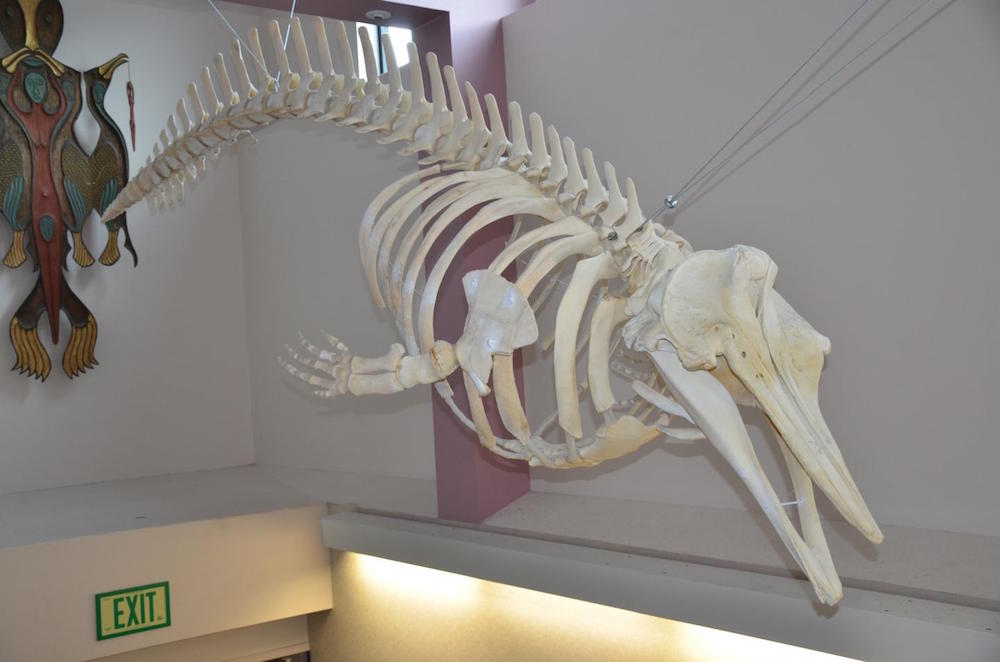
It took years, but scientists finally realized that a rarely seen whale isn't merely a dwarf or a juvenile common Baird's beaked whale (Berardius bairdii), but an entirely new species.
One of the clues that gave it away was its size. The elusive whale, which lives in the North Pacific, is 24 feet long (7 meters), smaller than the 40-foot (12 m) Baird's beaked whale. What's more, the Baird's whale is slate gray, and the newfound whale is black, earning it the nickname "karasu," the Japanese word for "raven."
A genetic study confirmed that the karasu is a previously unknown species. However, it is related to the Baird's whale, meaning that the two share a common ancestor, the researchers said. [Read the full story on the rare whale]
Wasteland frog
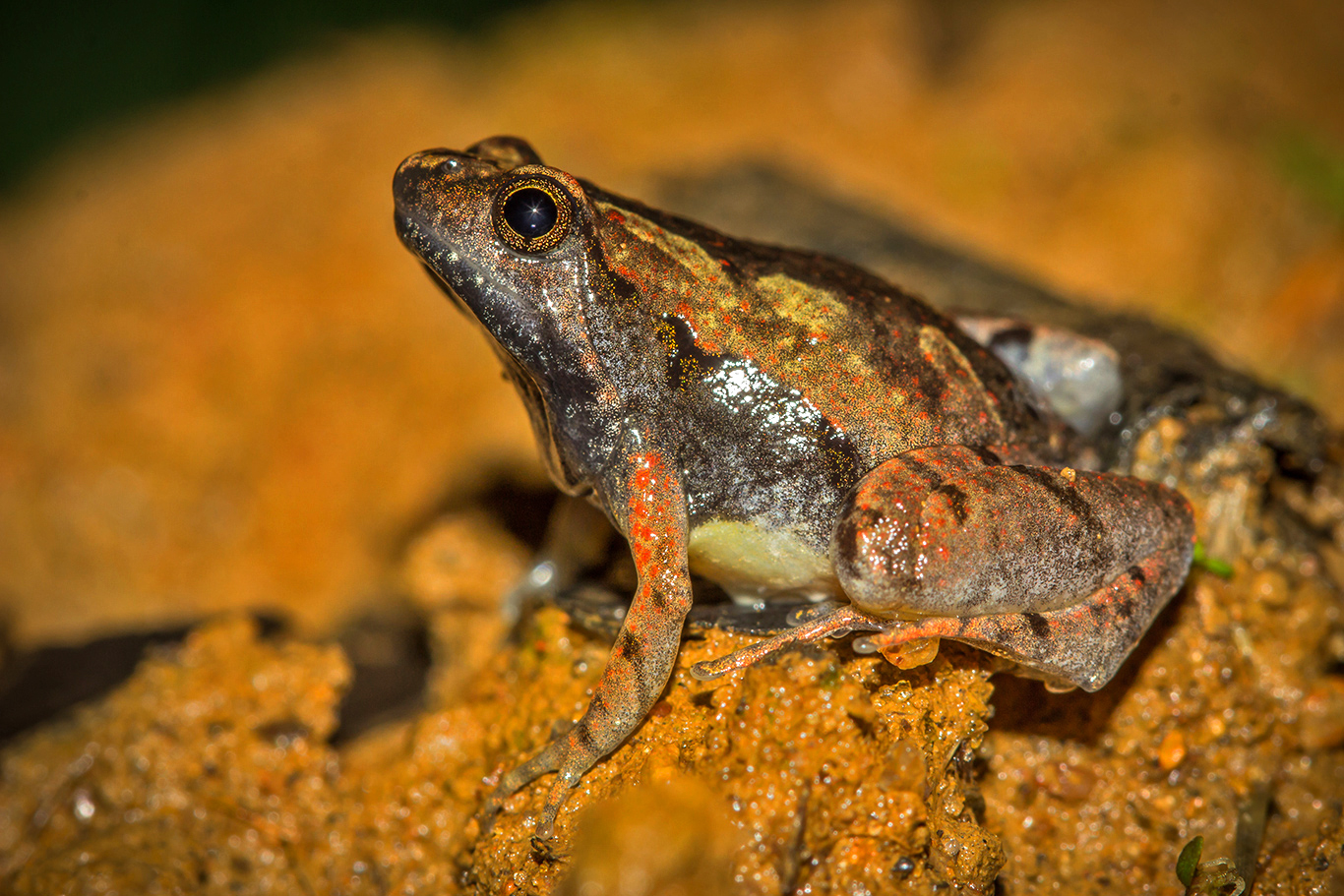
A teeny-tiny, newly identified species of frog sounds exactly like a cricket, researchers reported this year. The amphibian is so small that it can easily fit on a person's thumbnail. Perhaps that's why researchers didn't find the frog, which lives in the southwestern plains of India, until now.
Scientists named the frog Microhyla laterite, and noted that it lives on rocky terrain that the government defines as a "wasteland." But despite this classification, the wasteland is an incredible hotspot for biodiversity, the researchers said. [Read the full story on the tiny frog]
Peacock spiders

Peacock spiders may be tiny, but many people see them as big celebrities in the arachnid world. In 2015, the discovery of the black-and-white "Skeletorus" and the red-and-blue "Sparklemuffin" stole people's hearts — largely because of their colorful markings and intricate courtship dances.
This year, researchers found even more of these colorful spiders in Australia — seven in all — revealing that there are at least 48 species of peacock spider in the genus Maratus. All of the newfound spiders are no larger than 0.2 inches (5 millimeters), including Maratus bubo, so named because it reminded the scientists of an owl's face. (Bubo is the genus name for the great horned owl.) [Read the full story on the newfound peacock spiders]
Klingon newt
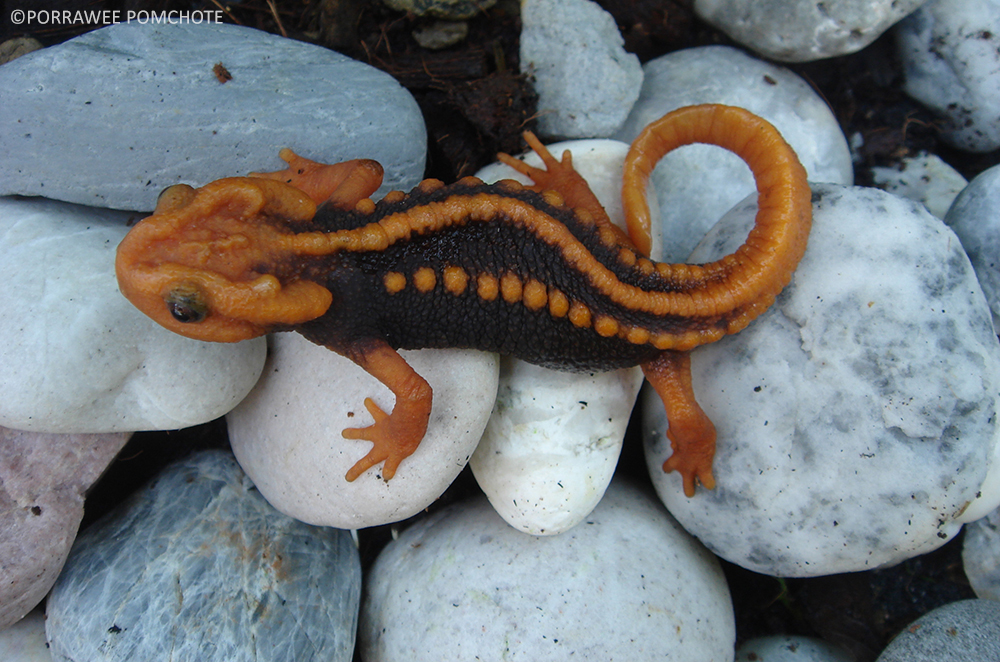
The Klingons from "Star Trek" have perpetually furrowed brows, which prompted scientists to nickname a newfound species of newt with a bumpy forehead in their honor.
The newt (Tylototriton anguliceps) is one of 163 previously undescribed species that live in Southeast Asia in an area encompassing Vietnam, Thailand, Cambodia, Laos and Myanmar, according to a 2016 World Wildlife Fund report.
Other newfound animals in the report include an iridescent snake (Parafimbrios lao) and other amphibians, reptiles, plants and mammals. The researchers urged policymakers to protect these animals, as many of the newfound species live in habitats threatened by human development. [Read the full story on the Klingon newt and the other newly described critters]
Muddy dinosaur

A bird-like dinosaur — complete with feathers, skinny legs and a bony crest on top of its head — met an unfortunate end about 66 million years ago, when it got stuck in the mud.
"The posture of the animal — the head is standing up, the neck is arched, the arms are spread out to the sides — it looks like it's trying to free itself," study co-researcher Steve Brusatte, a paleontologist at the University of Edinburgh in Scotland, told Live Science in November. "Those signs make us think that it was stuck in mud and trying to get out."
The researchers detailed the extraordinary newfound species (Tongtianlong limosus) in the journal Scientific Reports. They noted that although the donkey-size dinosaur had feathers, it couldn't fly. But its anatomy revealed that it had other impressive abilities. For instance, its sharp beak likely helped it eat shellfish, plants, nuts and eggs in what is now China, the researchers said. [Read the full story on the bird-like dinosaur]
Márquez's tarantula

The Nobel Prize-winning author Gabriel García Márquez has a new fan, and that fan has eight legs. This past year, researchers named a newfound species of tarantula after Márquez because both the author and the spider are from Colombia, the researchers said.
The tarantula (Kankuamo marquezi) has unique "attack," or urticating, hairs, the researchers found. Most tarantulas "kick" their urticating hairs at enemies, but K. marquezi is the only known spider in its subfamily to use its hairs in direct contact confrontations, the researchers said.
Márquez died in 2014, so he never got to meet the tarantula. But now, when people read his books, including "100 Years of Solitude" and "Love in the Time of Cholera," perhaps they'll also think of the spider that carries his name. [Read the full story on the Márquez tarantula]
Small-brained titanosaur
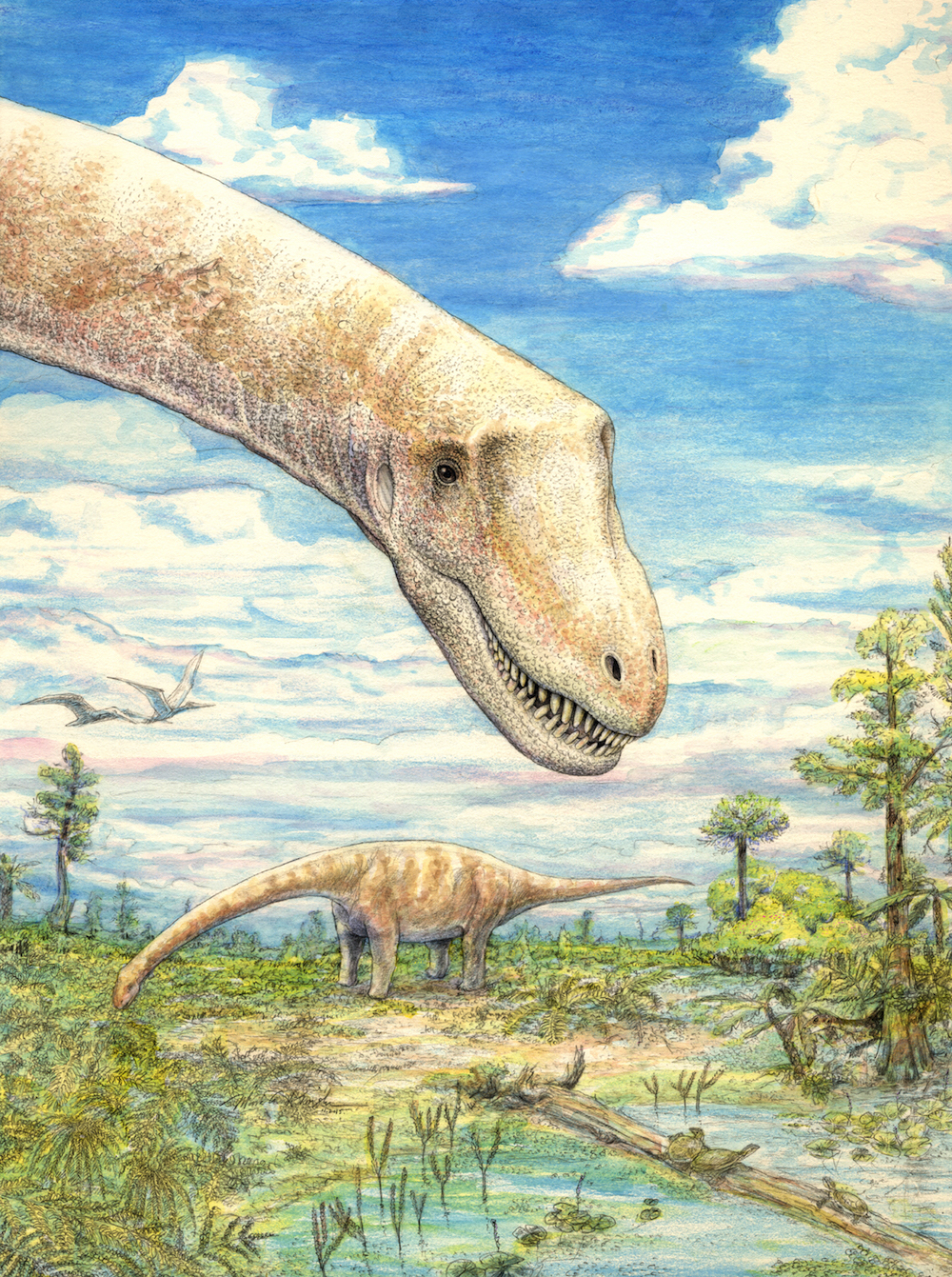
The discovery of a previously unknown species of titanosaur — a ginormous, long-necked dinosaur that lived during the Cretaceous period about 95 million years ago — has helped researchers in a very cerebral way.
Usually, titanosaur fossils lack skulls. That wasn't the case with this newfound specimen, which was discovered in Patagonia; it had a braincase, as well as several neck vertebrae, the researchers said.
The team found that the previously unknown beast (Sarmientosaurus musacchioi) had extraordinary senses for its small brain. For instance, it had large eye sockets, indicating that it had good vision for spotting food, mates and predators. Moreover, the anatomy of its inner ear suggests it could hear low-frequency sounds, likely those made by other titanosaurs, the researchers said. [Read the full story on the small-brained titanosaur]
Ancient Muppet-faced fish

This year, researchers found not one, but two new species of Muppet-faced, prehistoric fish. The 92-million-year-old fish measured more than 6 feet (2 m) in length, and were likely filter feeders that slurped down plankton.
Researchers named the two newfound species Rhinconichthys purgatoirensis (discovered in Colorado) and R. uyenoi (discovered in Japan). There's only one other known species of this fish (R. taylori), which scientists found in England in 2010. These findings suggest that fish in the genus Rhinconichthys lived all over the world, the researchers said.
The Rhinconichthys genus came to an abrupt end about 66 million years ago, when an asteroid slammed into Earth and killed the nonavian dinosaurs, the researchers said. [Read the full story on the Muppet-faced fish]

Laura is the managing editor at Live Science. She also runs the archaeology section and the Life's Little Mysteries series. Her work has appeared in The New York Times, Scholastic, Popular Science and Spectrum, a site on autism research. She has won multiple awards from the Society of Professional Journalists and the Washington Newspaper Publishers Association for her reporting at a weekly newspaper near Seattle. Laura holds a bachelor's degree in English literature and psychology from Washington University in St. Louis and a master's degree in science writing from NYU.


